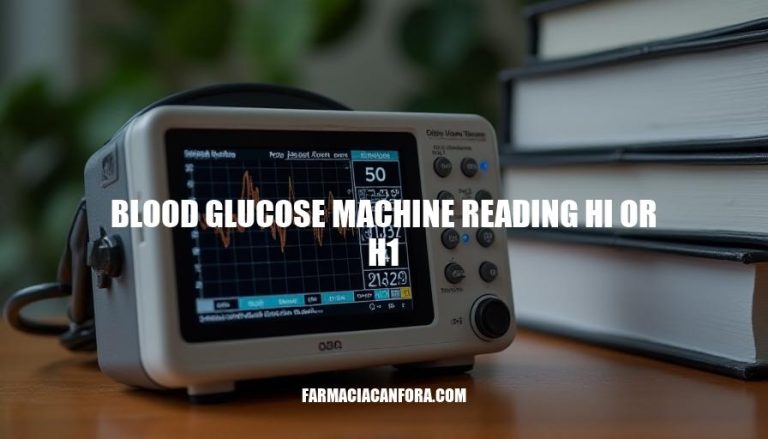


When a blood glucose machine displays a reading of “HI” or “H1,” it indicates that your blood sugar level is extremely high, often exceeding 600 mg/dL. This is a critical situation known as severe hyperglycemia and requires immediate attention. Such high readings are significant in diabetes management because they can lead to serious complications like diabetic ketoacidosis (DKA) if not promptly addressed. Always recheck your glucose level, consult your healthcare provider, and follow their guidance to manage your blood sugar effectively.
Blood glucose machines, or glucometers, measure the concentration of glucose in the blood. They typically use electrochemical technology, where a small blood sample is placed on a test strip containing an enzyme that reacts with glucose. This reaction produces an electrical current proportional to the glucose level, which the meter then converts into a readable value.
When blood glucose levels exceed the measurable range of the device, it displays ‘HI’ or ‘H1′ to indicate that the glucose concentration is too high for the meter to accurately measure. This is a safety feature to alert users that their blood glucose levels are dangerously high and require immediate medical attention.
Here are some common reasons why a blood glucose machine might show a ‘HI’ or ‘H1′ reading:
If you encounter a ‘HI’ or ‘H1′ reading, it’s crucial to recheck your blood glucose and consult with a healthcare provider if necessary.
Recheck the Reading: Wash and dry your hands thoroughly to ensure no food particles or substances interfere with the reading. Then, recheck your blood glucose level.
Check for Ketones: Use a ketone test strip to check for ketones in your urine. High ketone levels can indicate diabetic ketoacidosis (DKA), a serious condition.
Administer Insulin: If you have Type 1 Diabetes, administer insulin based on your doctor’s guidance. Since the exact glucose level is unknown, start with a dose for the maximum reading your meter can display.
Hydrate: Drink plenty of water to help flush out excess glucose and ketones from your system.
Consult a Healthcare Provider: Contact your doctor or diabetes care team immediately for further instructions. If you suspect DKA or feel unwell, seek emergency medical attention.
Monitor Symptoms: Keep an eye on symptoms like nausea, vomiting, abdominal pain, or rapid breathing, which could indicate DKA.
Follow Up: Schedule a follow-up appointment with your healthcare provider to review your diabetes management plan and make any necessary adjustments.
Here are some strategies:
Understanding and responding promptly to ‘HI’ or ‘H1’ readings on a blood glucose machine is crucial for effective diabetes management. These high readings, often exceeding 600 mg/dL, can lead to severe complications like diabetic ketoacidosis (DKA) if not addressed immediately.
To manage such situations, it’s essential to:
Consistent monitoring, medication adherence, and lifestyle adjustments are also vital in preventing high blood glucose levels and managing diabetes effectively.